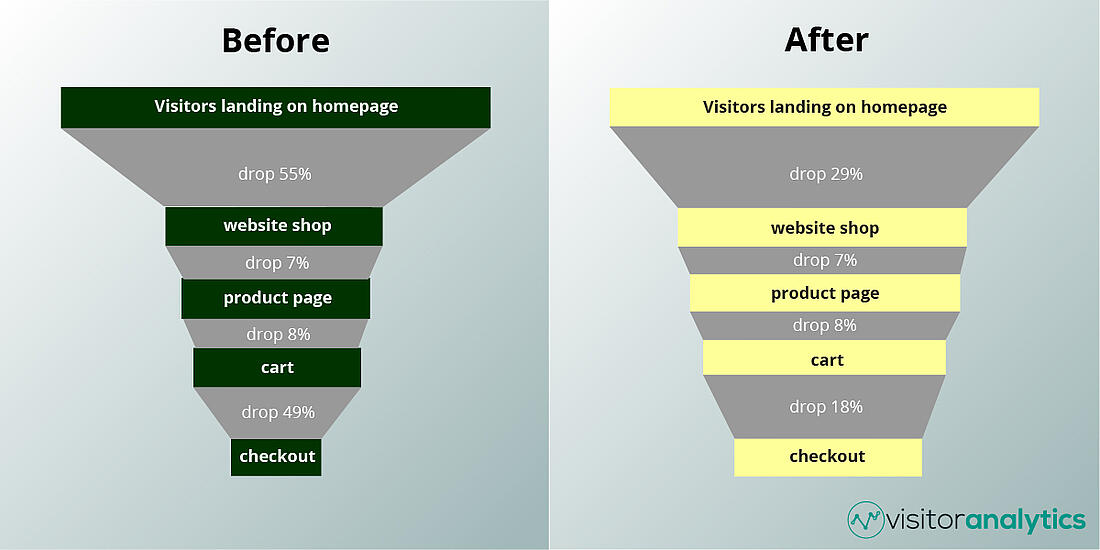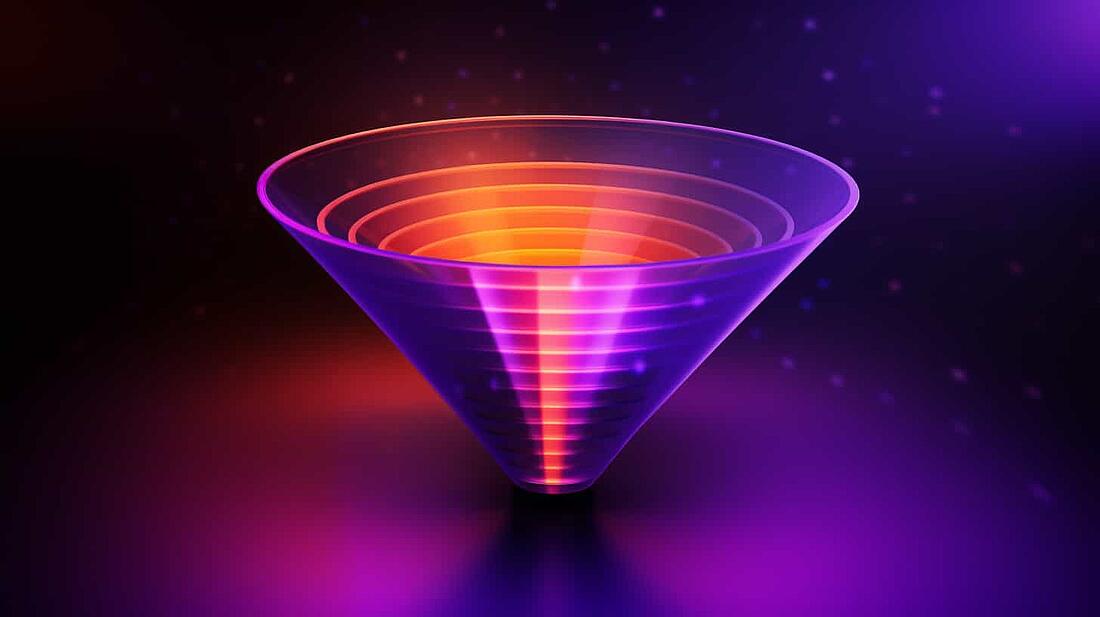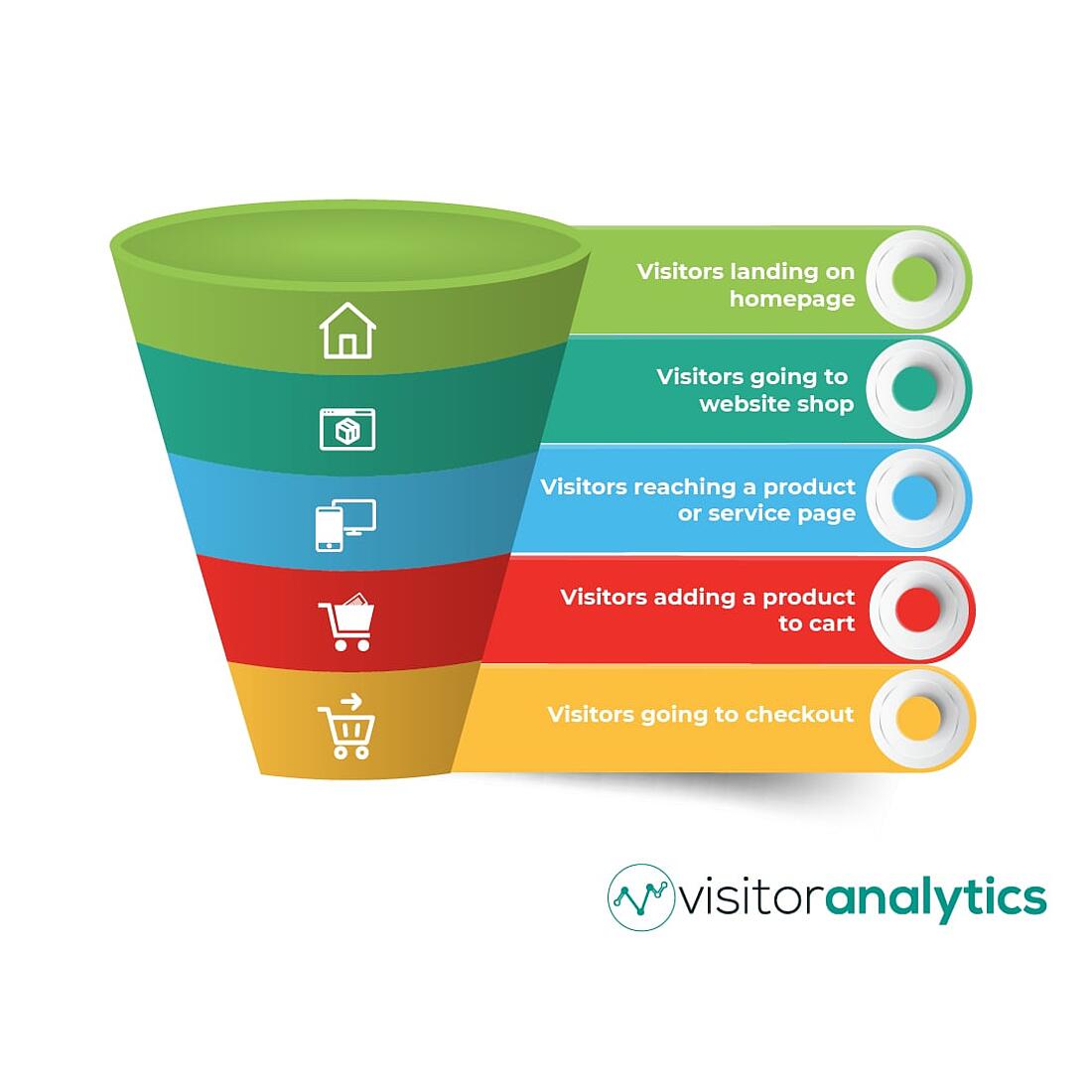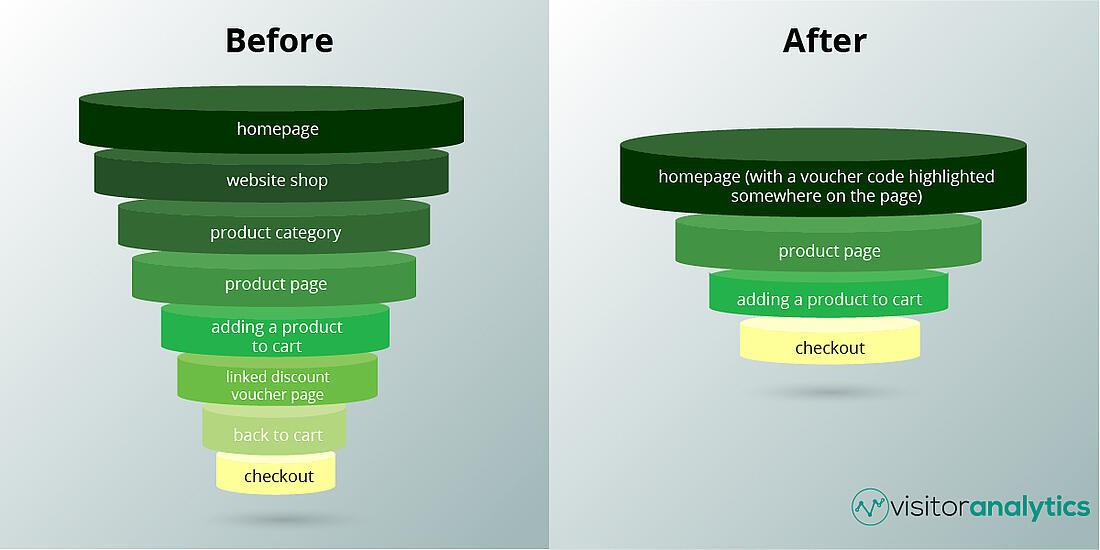- Why Us?
- Features
White Label
For SaaS Platforms & Agencies
Provide our complete analytics suite to your clients, directly within your own interface and with your/their own branding. Discover Analytics-as-a-Service and White Label Analytics. Great benefit, minimal effort.
- Pricing
- White Label
- Success Stories
- ResourcesGetting Started
CONTENTS
- Conversion Funnels Provide the Answer
- What Is a Conversion Funnel in Marketing?
- A Simple Conversion Funnel Example
- The AIDA Model - Conversion Funnel Theory
- Introducing Conversion Funnel Analytics
- 1. See Where You're Losing Customers
- 2. Learn the Reasons Behind Drop-offs
- 3. Identify Pages with High Conversion Rates
- 4. Provide an Intuitive Method for Measuring Conversion Success
- 5. Conversion Funnel Optimization
- Other Conversion Funnel Examples
- Conversion Funnel Example 1
- Conversion Funnel Example 2
- Try Out These Conversion Funnel Examples With TWIPLA
As a marketer or website owner, you might need some conversion funnel examples to get your head around this useful website behavior analytics tool.
Conversion funnels are often used as the primary guide for website development, but it obviously wasn't always this way.
Some time ago, when the internet was still in development and the first attempts at e-commerce were being made, website owners and digital marketers did not have all the functionality of the analytics tools that we have today.
Tracking precisely what had led to the sale of a product was therefore very difficult.
I remember working with website owners confused about why they received many visits to their websites but made very few sales of their products.
Therefore, it was very difficult to track precisely what had led to a product's sale.
Most of the time, it was because their websites were convoluted and were confusing customers. Visitors got lost somewhere between the product page and the actual checkout.
But where, and also how can we better analyze this?
Conversion Funnels Provide the Answer
Nowadays, experts have solved the problem.
Most experts use a tool called a funnel (or conversion funnel, or marketing funnel) to get an overview of that exact process.
They call it a funnel because it resembles and acts exactly like a funnel. But instead of liquids, in website analytics you work with visitors that land on your page. And in this parallel, the inside of the bottle is the last step of the conversion process, whether that is the checkout page, or a sign up page or similar.
In both cases, some of that liquid may inevitably be “spilled” and will not make it to the inside of the bottle. So in translation, that means that not all of the visitors make it from the top of the funnel to the point of conversion, at the bottom.
What Is a Conversion Funnel in Marketing?
Before we stampede towards our conversion funnel examples, let's firstly get to grips with the basics.
The marketing funnel is a tool used in analytics, to determine what percentage of the users landing on a webpage navigate towards other pages that represent steps to reaching a conversion goal. So in short, it is a more advanced tool for tracking conversion rates and also identifying problems in the customer journey.
It uses a simple graphical representation in the form of a funnel, where the top level represents the number of users visiting the landing page, while the next steps display the number of visitors that took an action to get to the next logical steps of the funnel. The bottom of the funnel then represents the number/percentage of visitors that made it to the conversion page.
In order to be able to work with this tool, you need to carefully set up a goal, and then design the stages of the funnel, up until goal completion.
A simple conversion funnel example would be the next one, consisting of 5 steps:
- Firstly, Visitors landing on homepage
- Secondly, Visitors going to website shop
- Thirdly, Visitors reaching a product or service page
- Fourthly, Visitors adding product to cart
- And finally, Visitors going to checkout
It is recommended to limit the steps of the funnel to the minimum necessary. And if a customer needs to navigate to 10+ different spots before making an acquisition, it is more likely that he/she will consequently drop out along the way.
The AIDA Model - Conversion Funnel Theory
So if we were to correlate the above funnel with assumptions about the user attitudes and intentions, a classical model would look like this:
- Awareness is the first level. Potential customers reached your website, so it is safe to assume they are aware of your existence.
- Interest represents the second and third steps. Visitors have not left your website, but still want to see your list of products.
- Desire is the fourth step. The product has been added to cart.
- Action is the fifth and final step. The user has subsequently paid for the product.
Introducing Conversion Funnel Analytics
Having the funnel in place is obviously useless without an analysis of the data.
Given this, here are some of the things you can discover:
1. See Where You're Losing Customers
Ideally, the funnel should not be very “steep”. If you see big differences from one step to the other, it means potential customers are dropping out before buying something. And in essence, identifying the place where the difference between steps is the biggest.
What this means is that you may have a problem on the funnel step prior to drop-off. It might have something to do with the design of the page or the information on it. See the next point on this list.
2. Learn the Reasons Behind Drop-offs
The funnel itself can’t help you understand why visitors abandoned the conversion process. Fortunately, there are funnel tools that correlate with visitor session replays. So this means that, at every step, you can see the actual recordings of the user interactions with the page.
This way, you can try to find a behavior pattern to explain the drop offs. Are some of the users not scrolling enough to reach the CTA button? Or are they not even hovering the mouse in the area that leads to the next step? Is it click rage? Or, is there an error on the way the page is displayed or is functioning?
Find the error, fix it and then reset the funnel visitor data to see if results improve.
3. Identify Pages with High Conversion Rates
You may be running several marketing funnels at the same time, with small variations to the steps you use. Compare the data and see which pages lead to a higher conversion rate. Learn from that and try to replicate those pages in the future.
4. Provide an Intuitive Method for Measuring Conversion Success
Successful business is based on data, not on guesswork. A marketing funnel provides percentages at every step of the way. You can even set yourself a conversion goal during planning. Some conversion funnels analytics tools, like the one from TWIPLA will use that as a standard and provide data to show you whether your performance is good or not. Are you reaching your goals? By how much have you missed the mark? After some adjustments, how have the percentages changed as a result?
5. Conversion Funnel Optimization
Take all of the data in and use it to improve. If you notice after some visits to the landing page that the funnel is not showing acceptable conversion rates, make changes to the steps or even to the entire funnel logic. After funnel analysis, you may also want to remove a step, change some page layouts, and rearrange the order. You will need to set up a new, optimized marketing funnel. Hopefully, the results should show.
Other Conversion Funnel Examples
Let us see another couple of examples of marketing funnels and how they can undoubtedly help us improve conversion processes:
Conversion Funnel Example 1

In the above funnel, you can emphatically see a big drop-off between the homepage and the shop, right at the first hurdle. Then there is also a significant drop at the last step. It is safe to say that the shop is undoubtedly not visible enough on the homepage.
There were two interventions on the homepage for this. Firstly, the color and layout of the shop button in the menu was changed to make it more prominent. And secondly, a banner with a CTA encouraging users to go to the shop for the latest deals and sales was also added.
Finally, recordings of the drop-offs after “add to cart” were consulted. It turns out that in some browsers there was an error and the cart page didn’t display correctly, with some elements overlapping as a result. The error was then fixed.
No interventions were done on the logic of the funnel. Visits were then reset. After the next 1000 visits to the homepage, the percentages consequently increased drastically.
In sum, there are a total of 8 steps in the above funnel.
There are not that many drop-offs at a single stage, but by the time we reach the bottom of the funnel, the conversion rate is markedly very low. And in essence, this suggests that there may be too many steps, some of them unnecessary.
If we take a closer look, we can see that we are focusing on some specific product here, to which you can apply a discount. However, it's not necessary to drag customers through the entire shop and to an entire category page. Instead, try promoting the specific products on the homepage, with direct links to the product pages? This way, we eliminate steps 2 & 3.
Also, do we need to send the user back and forth to a voucher page? If we place the voucher anywhere else in the process, we can then also eliminate steps 6 & 7.
We move from 8 steps to 4, which will drastically increase the chance of getting a good conversion rate.
Try Out These Conversion Funnel Examples With TWIPLA
Conversion funnels are undeniably a great way to focus on what matters most to website development - increasing sales, signups, and other key actions.
By increasing the appeal of key webpages, you'll then quickly find that your website quickly starts working for you, and achieving your goals.
Given this, why not try putting these conversion funnel examples into practice?
So sign up to TWIPLA, and start creating your own conversion funnels today!
Share article
Get Started for Free
Gain World-Class Insights & Offer Innovative Privacy & Security

You might also like
Alternative to Google Analytics: Why TWIPLA Outperforms Google Analytics 14 October 2019 - by Editorial Staff
14 October 2019 - by Editorial Staff
Best TWIPLA Features: 4 Essential Tools with Real-Life Examples 14 October 2019 - by Editorial Staff
14 October 2019 - by Editorial Staff













